LinearRepeater2D
The LinearRepeater2D creates instances of it’s source Shape, distributing them in a linear organization. The spacing between instances can be defined as a “bay” (the width of the cell) or by a count of how many instances should be created along the length.
As with the other 2D Repeaters, LinearRepeater2D is best used when merging with other Shapes is needed rather than to create a row of free-standing objects (in which case, the 3D LinearRepeater is more efficient).
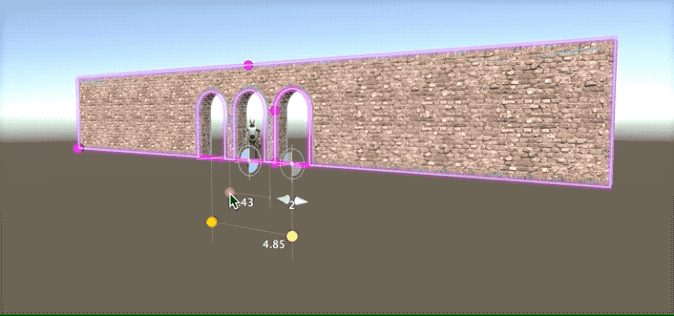
LinearRepeater2D
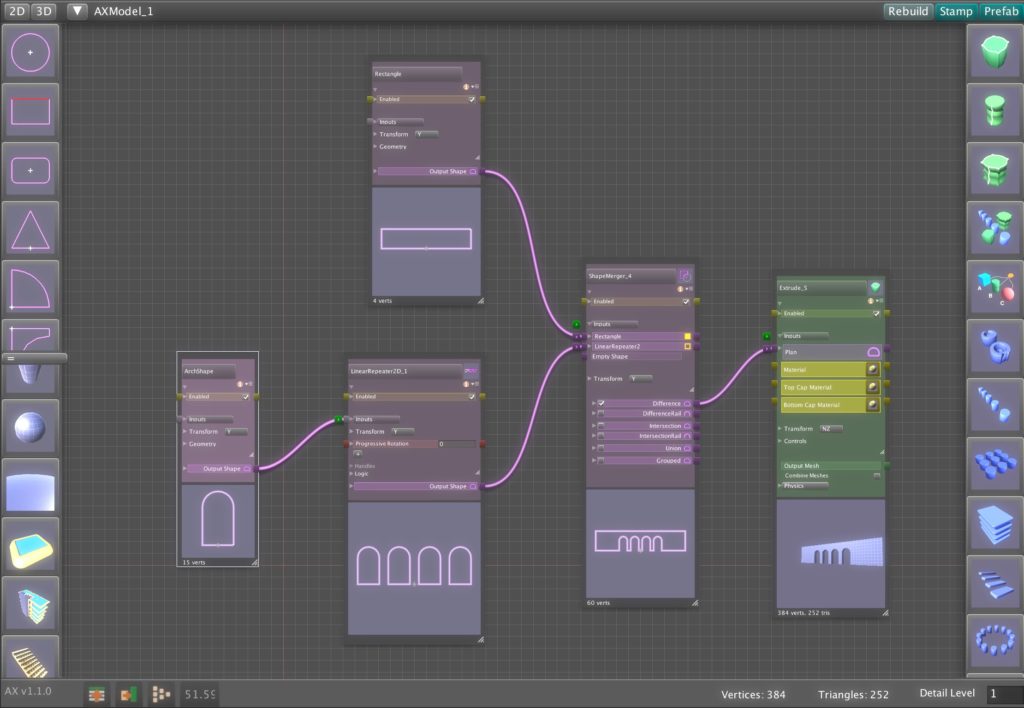
Node graph using a LinearRepeater2D.
As with all the repeaters, LinearRepeater2D has the concept of nodes and cells. If you think of the repetition as a kind of one-dimensional grid, the Node Shape falls on the grid lines, while the cell Shape falls between.
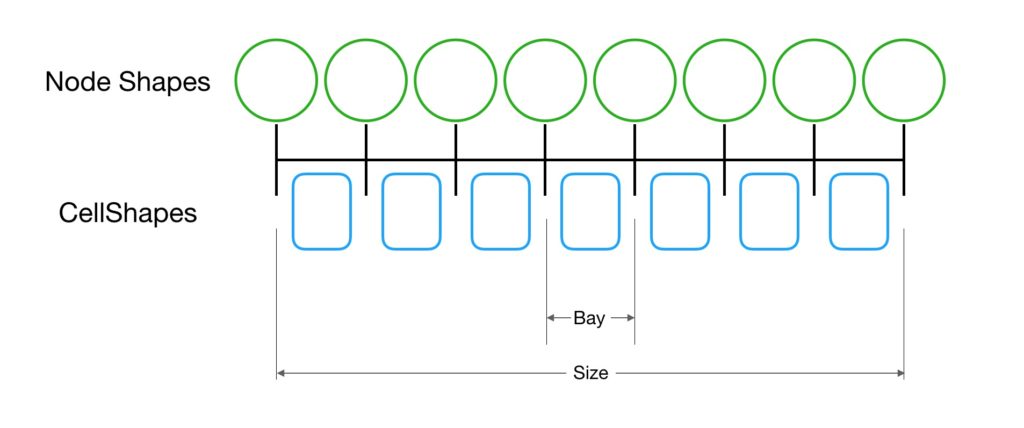
The sizing of the repeater and its bays is controlled by a RepeaterTool connected to the RepeaterU input.
Parameters

LinearRepeater2D Palette
The LinearRepeater2D has several input parameters which determine what will be repeated and how.
Node Shape
The NodeShape is the Shape that will fall on the hash marks of the repeater. If the repeater represented a building facade, the Node Shapes would be those that fall on the columns, e.g., between the cells.
Cell Shape
The Cell Shapes fall in the center of each bay of the repetition. If the repeater represented a building facade, the Cell Shapes would be the windows.
JitterTranslation
Input for a JitterTool which will be used by the node to randomize the translation of each Shape instance.
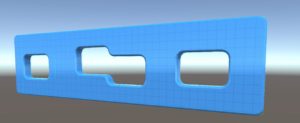
LinearRepeater2D with translation jitter.
JitterRotation
Input for a JitterTool which will be used by the node to randomize the translation of each Shape instance.
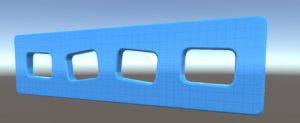
LinearRepeater2D with rotation jitter.
JitterScale
Input for a JitterTool which will be used by the node to randomize the translation of each Shape instance.
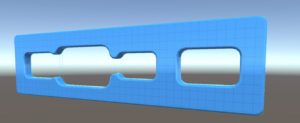
LinearRepeater2D with scale jitter.
RepeaterU
Input for the RepeaterTool that will be used to control the Size, Bay, etc. of the repetition.
ProgressiveRotation
The LinearRepeater2D has only one parameter on board, ProgressiveRotation , which adds an additional rotation to each instance. For example, if you specify a 45 degree ProgressiveRotation, the first instance will be 0º, the second will be at 45º, the third at 90º, etc.


Recent Comments